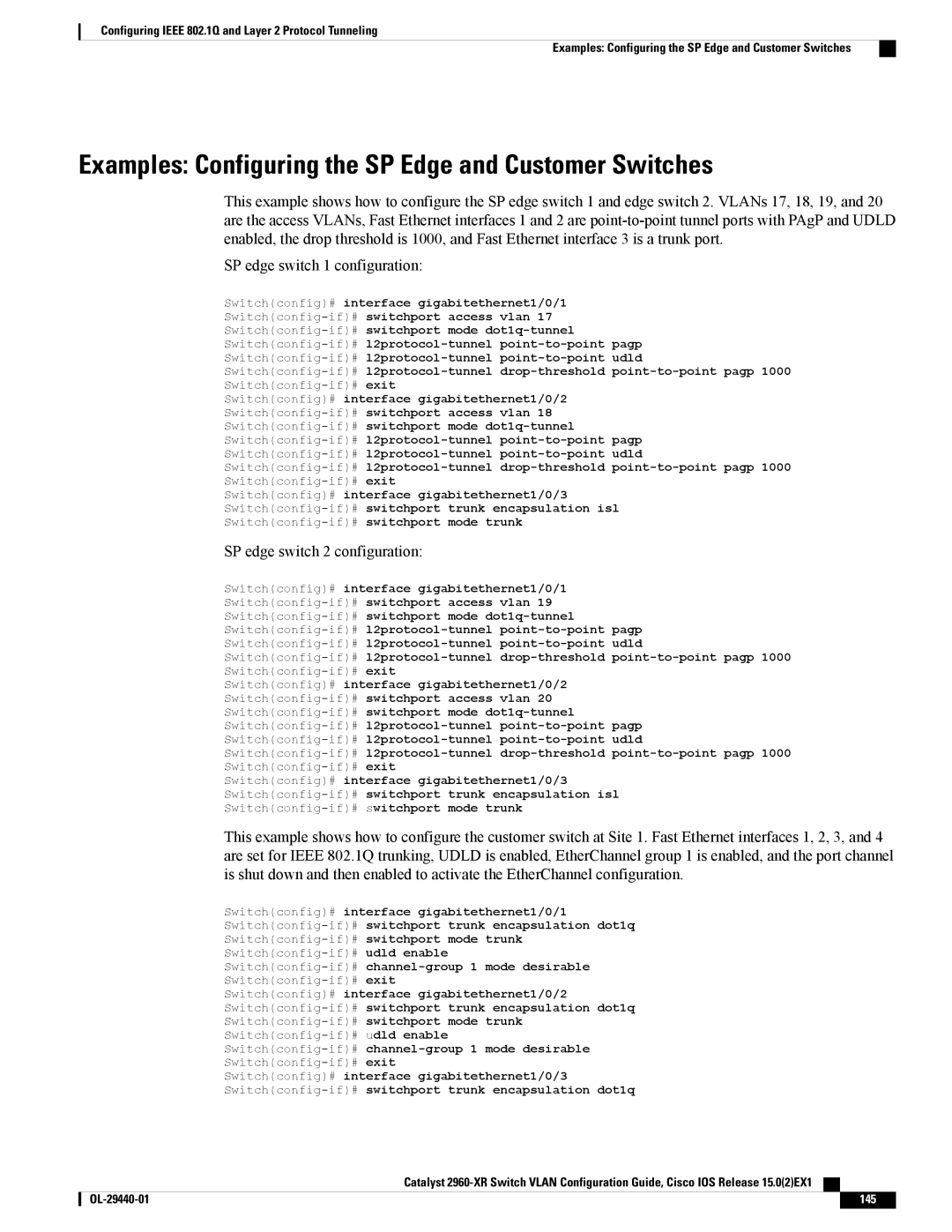WSC2960XR48FPSI specifications
The Cisco WSC2960XR48FPSI is an advanced, high-performance switch that plays a vital role in today's enterprise networking environments. Designed for reliability and efficiency, it serves as a foundational component for organizations concentrating on network agility and scalability.One of the standout features of the WSC2960XR48FPSI is its ability to support 48 Gigabit Ethernet ports, facilitating high-speed connectivity across multiple devices. This capacity makes it an ideal choice for enterprises that require robust network infrastructure to handle large volumes of traffic effortlessly. Additionally, it includes two 10-Gigabyte SFP+ uplink ports, providing enhanced bandwidth for backbone connections, enabling seamless integration with data center environments.
The switch supports Cisco's StackPower technology, which allows multiple switches to share power resources. This capability not only provides redundancy but also ensures that organizational networks can be efficiently managed, reducing operational costs by utilizing power resources wisely.
In terms of reliability, the WSC2960XR48FPSI offers a fanless design, making it an optimal choice for deployments in noise-sensitive environments such as classrooms or offices. Its features include support for Cisco's FlexStack-Plus technology, which allows for easy stacking of up to eight units. This results in simplified management and increased bandwidth as switches in the stack operate as a single entity.
The switch is powered by Cisco IOS Software, providing robust features, including advanced security protocols, quality of service (QoS) capabilities, and comprehensive network management tools. With support for multicast routing and enhanced security, organizations can safeguard their data while ensuring smooth and reliable communication across applications.
Moreover, the Cisco WSC2960XR48FPSI is designed to be energy-efficient, compliant with IEEE 802.3az Energy Efficient Ethernet standards, which aids in reducing power consumption without sacrificing performance. This commitment to sustainability makes it a favorable option for organizations striving for greener operations.
To summarize, the Cisco WSC2960XR48FPSI is an exemplary model of reliability, scalability, and performance. Its sophisticated features, including high port density, advanced security measures, and energy efficiency, make it a cornerstone for modern enterprise networks, enabling organizations to adapt effectively in an ever-evolving digital landscape.

